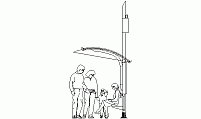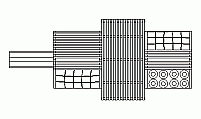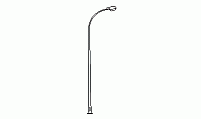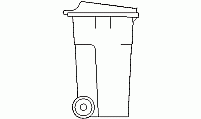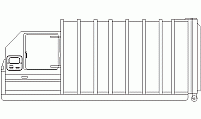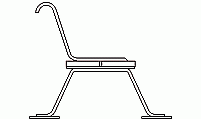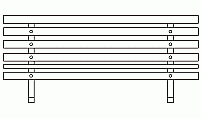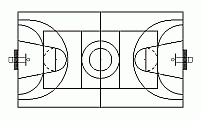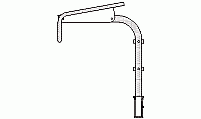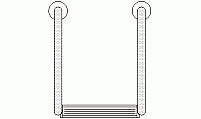CAD Blocks categories
 3D models
3D models home furniture
home furniture sanitary ware - bathrooms
sanitary ware - bathrooms professional equipment
professional equipment doors and windows
doors and windows people and animals
people and animals plants and trees
plants and trees vehicles - transports
vehicles - transports architectural details
architectural details mechanical - electrical
mechanical - electrical urban planning - civil works
urban planning - civil works safety health construction
safety health construction accessible design
accessible design drawing sheet
drawing sheet signals
signals construction machinery
construction machinery accessories and objects
accessories and objects maps and street maps
maps and street maps
Minimalist Spring Rider CAD Block with Complete Details

size: 10 kb
category: street furniture
related categories:
description: two orthogonal views of a minimalist spring rider, featuring a spring base and a flat, ergonomic seat made of wood or special plastics.
file extension: .dwg CAD - AutoCAD software
Specifications, Materials, and Safety Features of Minimalist Spring Riders
Structural Features of the Geodesic Climbing Sphere
The geodesic climbing sphere features a circular framework supported by horizontal bars evenly spaced for climbing activities. The structure incorporates two diagonal cross braces for enhanced stability and is mounted on a robust base to elevate the sphere. Typical materials used are galvanized steel for durability or high-density polyethylene (HDPE) for lightweight, weather-resistant alternatives. Each section is connected by precision welding or reinforced joints to ensure structural integrity.
Alternative structures include climbing domes with hexagonal or pentagonal panels, which provide similar functionality while enhancing aesthetic appeal. Common applications are in playgrounds, adventure parks, or gymnasiums, tailored for recreational use.
Common Dimensions and Specifications
The standard diameter of geodesic climbing spheres ranges between 96 inches (2.44 meters) and 144 inches (3.66 meters). Tube diameters are typically 1.5 inches (38 mm), providing a strong grip for children and adults. For safety, the bar spacing is maintained between 6 inches (15 cm) and 9 inches (23 cm), preventing entrapment.
Semicupular climbing domes with triangular mesh patterns are designed for both strength and aesthetics. Standard diameters range from 72 inches (1.83 meters) to 180 inches (4.57 meters), accommodating various user age groups. The height of these structures typically measures 36 inches (0.91 meters) to 90 inches (2.29 meters), creating a safe and accessible play environment. Tubing diameters for the triangular bars generally measure 1.25 inches (32 mm) to 2 inches (51 mm), ensuring durability and a secure grip for climbers.
Construction and Installation Guidelines
- What materials are recommended for the frame?
- Frames should be constructed using galvanized steel or HDPE to ensure durability and resistance to weather conditions.
- How should the base be installed?
- The base must be anchored on a stable surface, using concrete footings for permanent installations or adjustable pads for mobility.
- What safety measures should be included?
- Install fall cushioning such as rubber mats or engineered wood fiber under and around the structure to minimize injury risks.
- How can this design be customized?
- Customization options include altering the bar spacing, adding safety nets, or integrating play features like slides or ropes.
- What is the ideal age range for climbers?
- This climbing sphere is suitable for children aged 5–12 years, with supervision recommended for younger users.
Advantages of Geodesic Climbing Spheres
Geodesic climbing spheres provide a unique and engaging play experience, encouraging physical activity and improving motor skills. The symmetrical design ensures stability, while the use of durable materials like steel or HDPE extends the lifespan of the structure.
Compared to flat climbing walls, these spheres offer a 360-degree climbing surface, maximizing play space and creativity. Their modular nature also allows for easy customization and repair, reducing long-term maintenance costs.
History and Evolution of Climbing Spheres
The concept of geodesic structures was popularized in the mid-20th century by architect Buckminster Fuller. Initially designed for domes, the geodesic framework was adapted for recreational uses, including climbing spheres.
Globally, variations of these climbing structures include netted domes in Europe, modular panels in Asia, and hybrid designs in North America. Each reflects local safety standards and material availability while maintaining the core principle of geodesic geometry.



